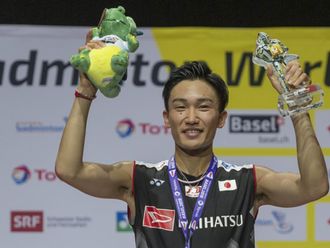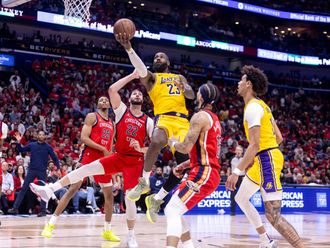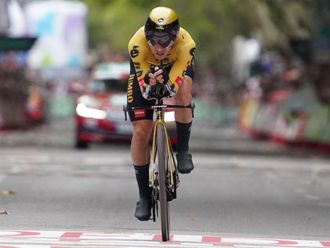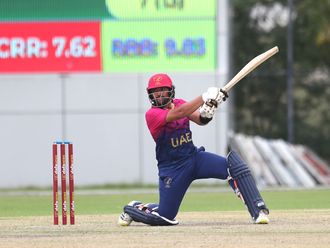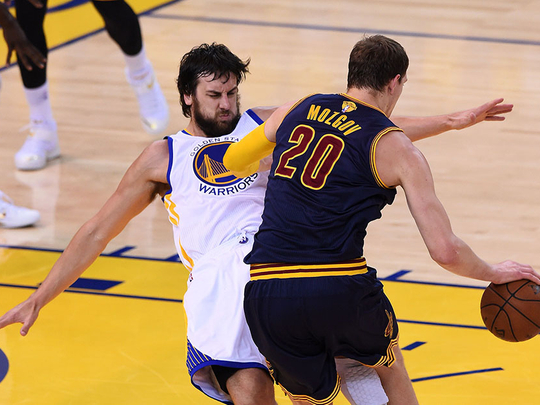
Remember when it was widely accepted that the Golden State Warriors’ NBA championship hopes were tethered to Andrew Bogut’s ability to stay healthy?
Or how when everyone agreed that the Timofey Mozgov trade was the event that gave the Cleveland Cavaliers a real shot at the title?
In game five of the NBA Finals, Bogut did not leave the bench for a single minute of action. It was 6ft 7in forward Draymond Green who gobbled up most of the minutes at centre as the Warriors built a 3-2 series lead to position themselves one win away from the title.
Mozgov, Bogut’s fellow 7ft centre, did make it onto the hardwood for nine minutes. But the Russian failed to score, get a rebound or record a blocked shot as Tristan Thompson, all 6ft 8in of him, manned the middle.
Where have all the rim protectors gone?
In the first five games of the Finals, Bogut, the All-Defensive second-team centre, has played just 14.6 minutes per game after averaging 23.6 minutes in regular season contests.
Mosgov was averaging 27.4 minutes in the finals before his game five disappearing act.
It made the latest outing look, at times, like a positionless pick-up game.
It started when Warriors coach Steve Kerr went ultra-small with Green at centre in the final exchanges of game one, a move that helped his team to an overtime win. As the series has progressed, we have seen more and more of the Warriors’ free-switching defence and less and less of Bogut.
Early in game five, as Cleveland’s slow frontcourt was getting ripped apart by the speed of Green and MVP Stephen Curry, coach David Blatt countered with a similar, smaller strategy, inserting guard JR Smith for Mosgov.
Of course, it didn’t lead to a win, but that doesn’t mean it wasn’t the right thing to do.
After the game, he said: “I thought it was our best chance to win the game, and we were definitely in the game with a chance to win. So that’s the way we played it.”
And he was right to do so. This wasn’t a gamble that didn’t work. It was one team doing something better than the other.
What do the shooting numbers teach us? In game five, the Cavs were 20-51 on two-point attempts, a rate of 39.2%. The Warriors were 24-51 for 47%. During the first four games, the Cavs averaged 25-60.3 on twos, a rate of 41.5%, while the Warriors hit 25.5-53 twos for 48.1%.
That means, paradoxically, both teams took fewer shots from within the three-point line in game five when compared with the other Finals games. And despite the lack of paint patrol, both teams shot a lower percentage on two-pointers.
On threes, the Cavs were 12-35 for 34% in game five. The Warriors were 12-26 for 46%. These figures compare to the Cavs' pre-game-five stats of 7.8-26.5 for 29.2% and the Warriors’ averages of 10.5-31.5 for 33.3%.
So three-point shooting was up with the centres off the floor. Having more long-range shooters on the floor is leading to more long-range shots. No surprises there.
Granted, these are tiny sample sizes. But if going small means getting into a shootout with the Warriors, the Cavs might want to go big or go home.
In the history of NBA Finals’ tied at 2-2, the winner of game five has taken the series 71.4% of the time, according to nba.com.
Going small has given the Warriors a bigger chance of winning a first title since 1975.



